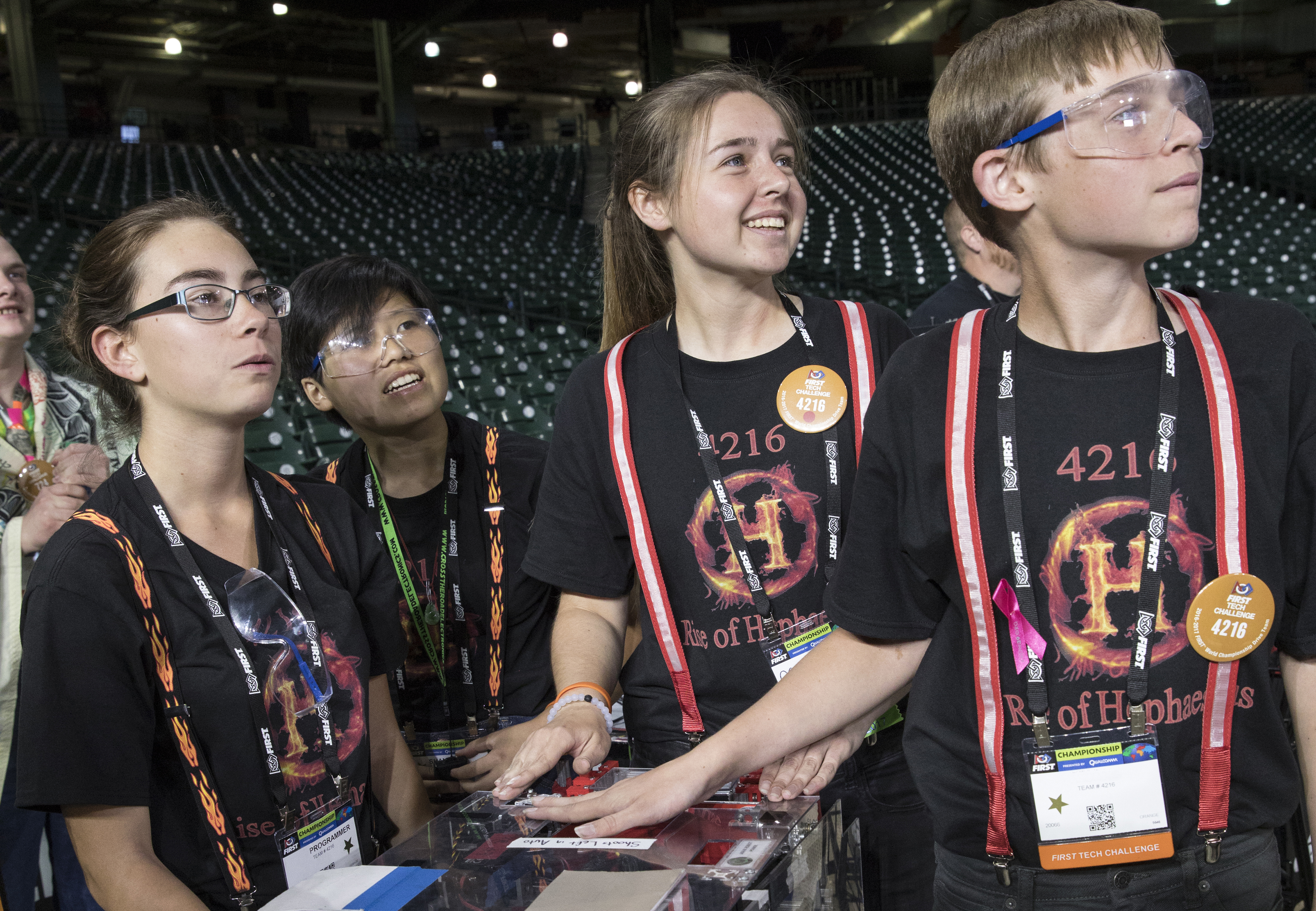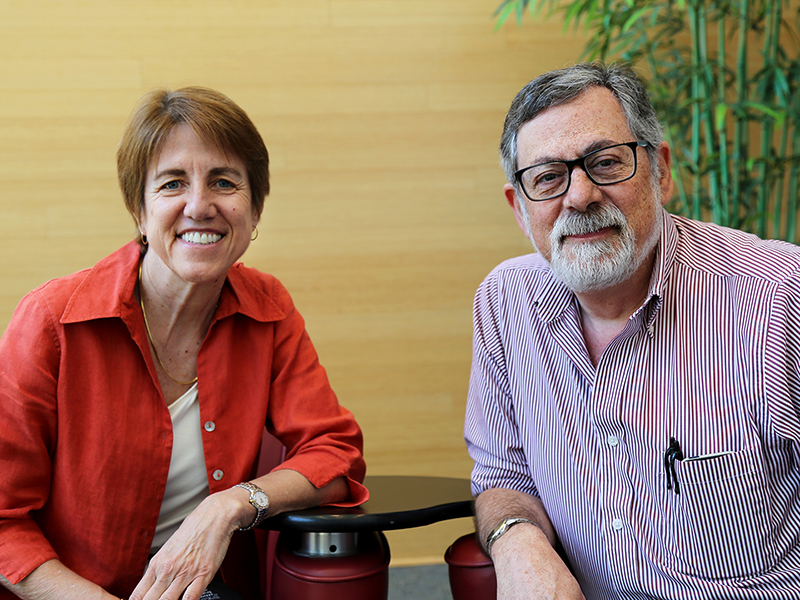
By Karen Shih
Imagine a football stadium full of bright lights, animated announcers and a cheering crowd — all gathered for a national high school robotics competition.
That’s the type of atmosphere that FIRST, an extracurricular robotics program, creates for about 500,000 K-12 students across 50 states and nearly 90 countries. Working in teams and within a set time frame, students design and build a robot that can accomplish specific tasks. The goal: to interest students in STEM (science, technology, engineering and math) and ultimately careers in engineering, computers, technology and more. But does it work?
FIRST (For Inspiration and Recognition of Science and Technology) turned to Heller’s Center for Youth and Communities (CYC) to find out. CYC Associate Directors and Senior Fellows Alan Melchior ’74, MA’07, and Cathy Burack started a longitudinal study in 2011 to evaluate the long-term effects of FIRST’s middle and high school programs.

“It’s great to say at the end of the school year that everyone is excited and feels they learned a lot,” says Melchior, who has done short-term evaluations of FIRST since 2002. “But where does it lead? Do these kids go on to do more science and tech than they would have in the absence of FIRST?”
Melchior and Burack are studying 1,273 students from the 10 states with the highest number of FIRST teams, including 822 FIRST participants and 451 comparison students who enrolled in science and math classes but were not in FIRST. All the students, along with their parents, completed a baseline survey five years ago. FIRST team leaders — a mix of teachers and parents — also completed a survey that year. Students have since received follow-up surveys at the end of each school year.
The first four years of data show that FIRST participants had significantly higher STEM knowledge and identities than those in the comparison group. FIRST participants also had an interest in STEM careers and activities — something that held true for students across gender and racial, economic and geographical backgrounds.
“One of my favorite storylines is that all the things that are true for the FIRST kids are doubly true for girls,” Burack says. “STEM interest for girls in the program is off-the charts high. We’re still trying to sleuth out why. One of our operating theories is that it’s finally a place where girls who have STEM interests can shine.”
The positive impacts of FIRST continue into college: Alumni are more than twice as likely than comparison students to take engineering courses during their freshman year — a number that rises to 3.4 times for females. Overall, alumni show greater interest in majoring in computer science, engineering and robotics, and are more likely to join STEM-related clubs, competitions or take on STEM internships.
Melchior and Burack will continue the study through at least 2019, though they started presenting their initial results at conferences this spring. They hope to influence education policymakers — particularly at the state level — to give the same level of support to these types of programs as they give to sports.
“This kind of hands-on, project-based learning experience is a very effective way of helping young people engage in STEM,” Melchior says. “How does learning the quadratic equation make a difference in a real-world setting? This is a good way of making that connection.”
